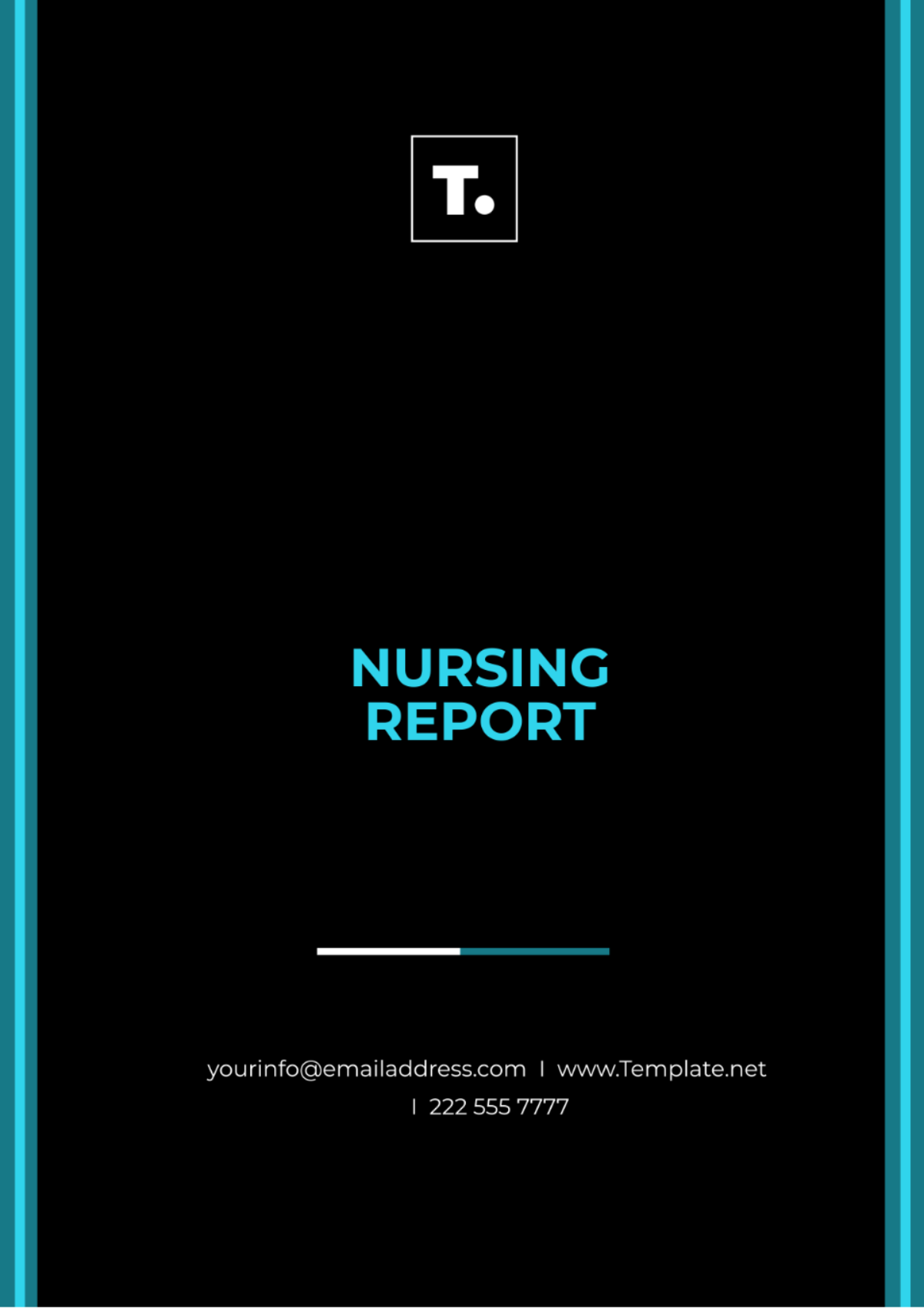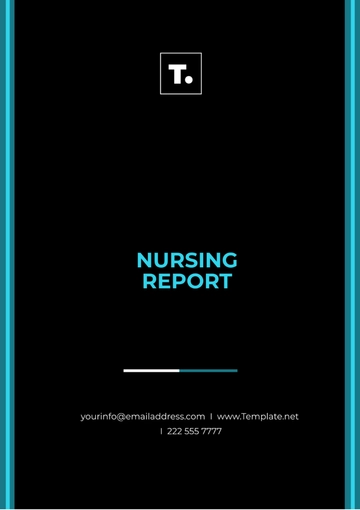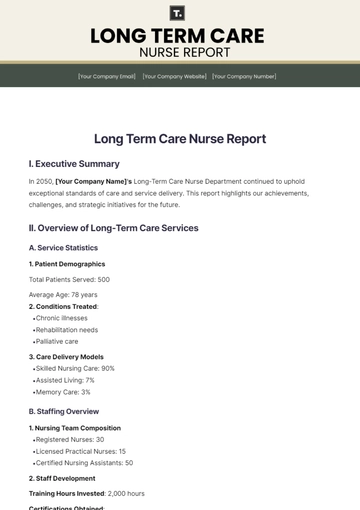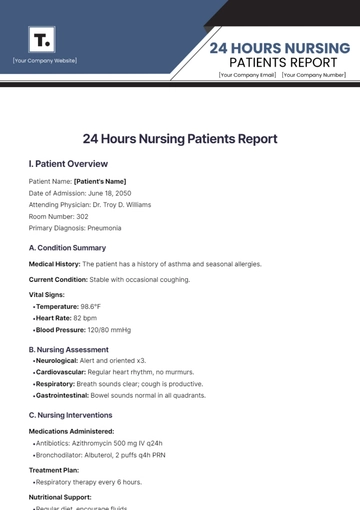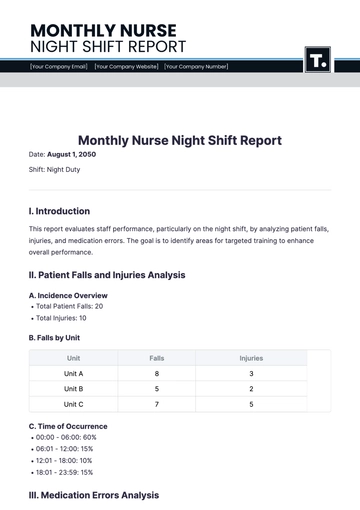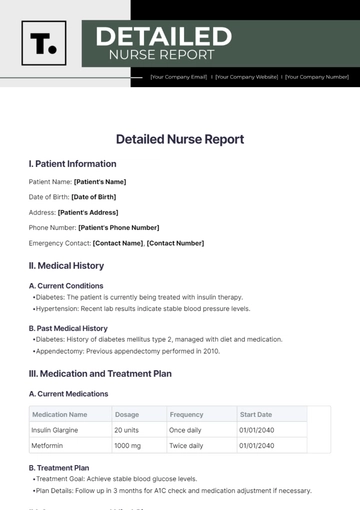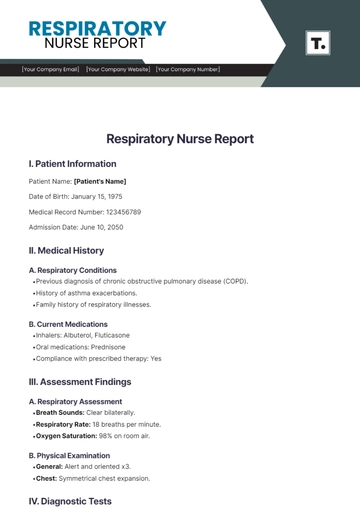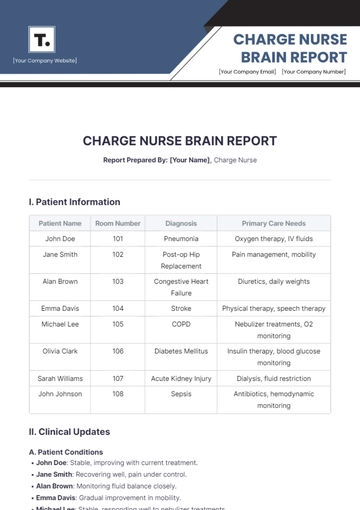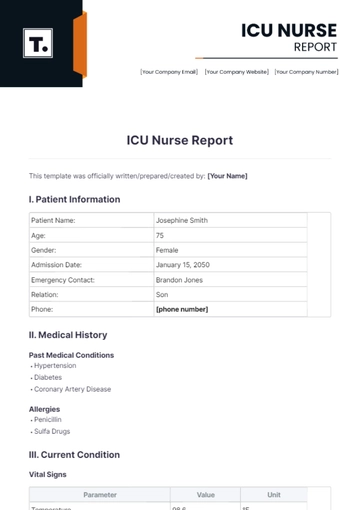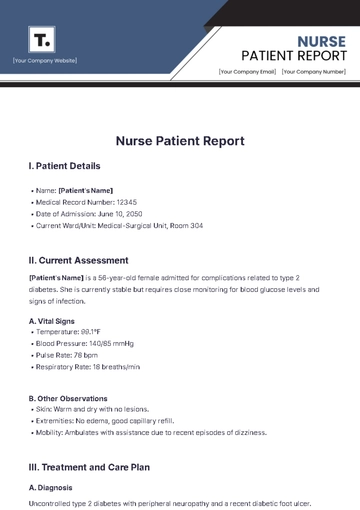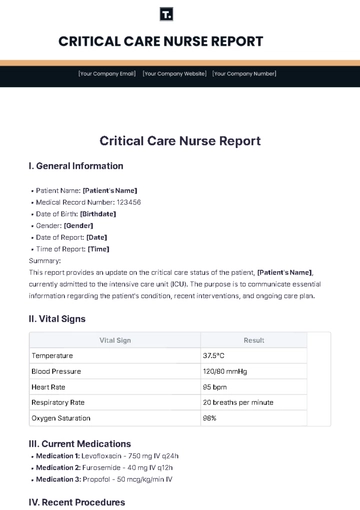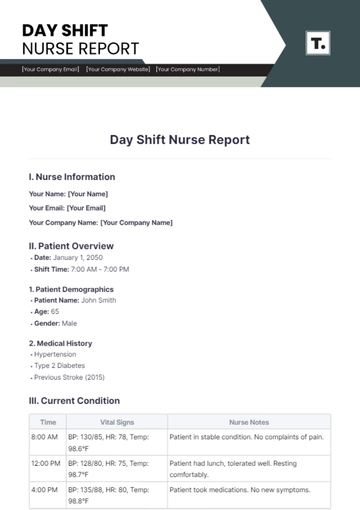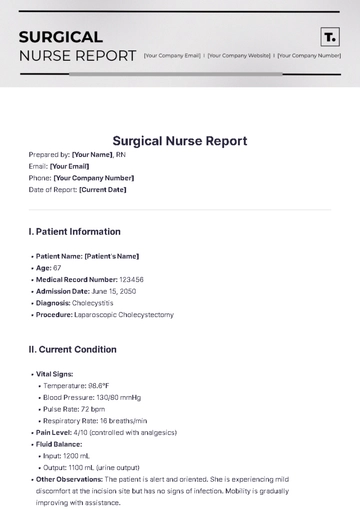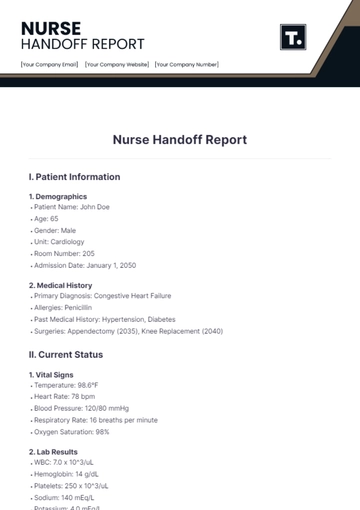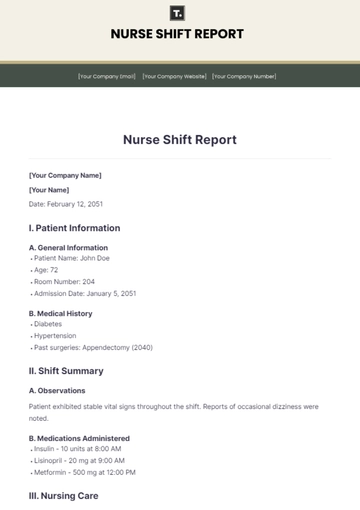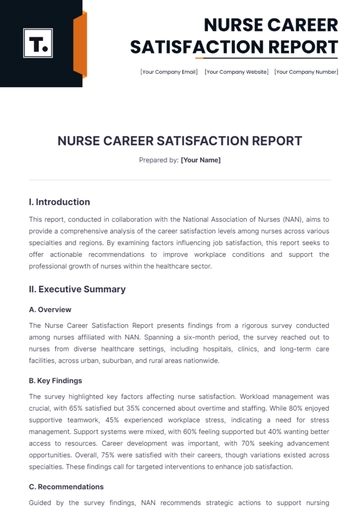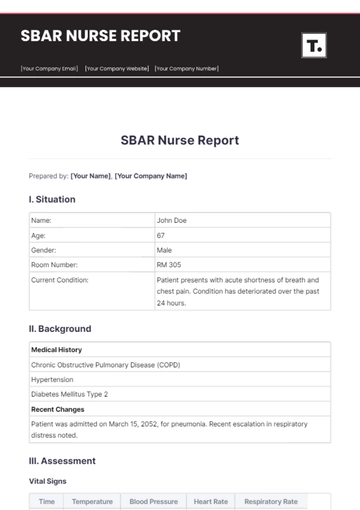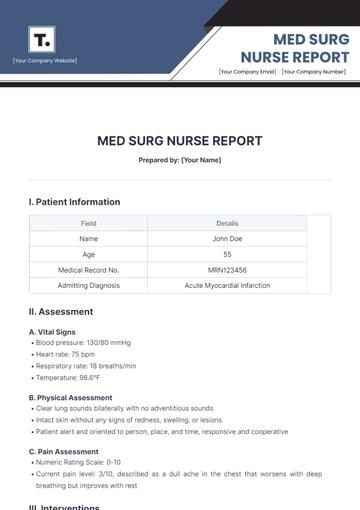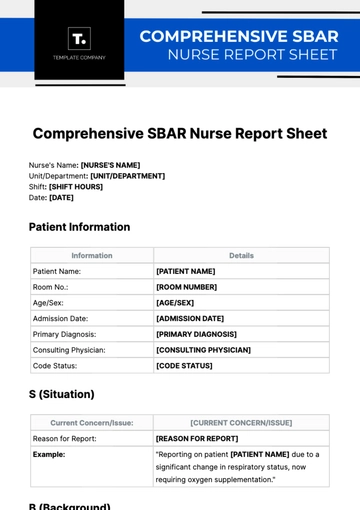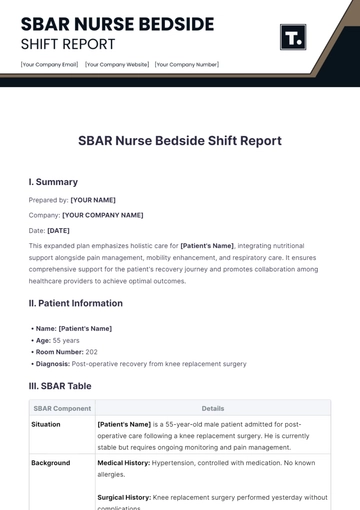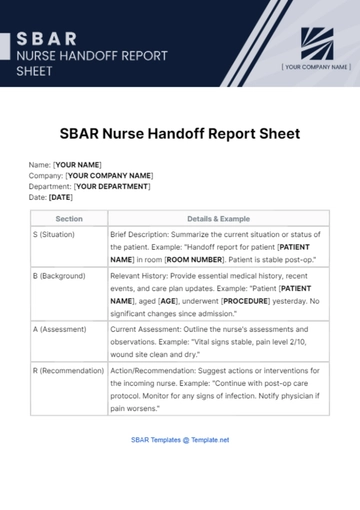Nursing Report
Patient Name: | Jane Martinez |
|---|
Patient ID: | 2050-10048 |
|---|
Date of Report | August 18, 2050 |
|---|
Report Time: | 8:00 am |
|---|
Nurse: | [YOUR NAME] |
|---|
Hospital: | [YOUR COMPANY NAME] |
|---|
Patient Overview
Diagnosis | Type 2 Diabetes Mellitus, Hypertension |
|---|
Admission Date | August 15, 2050 |
|---|
Current Room | 305B |
|---|
Primary Physician | Dr. Emily Carter |
|---|
Vital Signs
Temperature | 98.6°F |
|---|
Pulse | 78 bpm |
|---|
Respirations | 16 per minute |
|---|
Blood Pressure | 130/85 mmHg |
|---|
Blood Glucose Level | 142 mg/dL |
|---|
Current Medications
Metformin | 500 mg twice daily |
|---|
Lisinopril | 10 mg once daily |
|---|
Aspirin | 81 mg once daily |
|---|
Recent Observations
Physical Condition:
Overall Status: The patient is stable with no new complaints of pain or discomfort. The patient reports feeling generally well and denies any acute issues.
Edema: No signs of peripheral or localized edema are observed. Extremities are noted to be well-perfused with no swelling.
Distress: No signs of respiratory distress, discomfort, or unusual fatigue noted. The patient appears comfortable and alert.
Diet:
Diet Compliance: The patient is adhering to a prescribed diabetic diet plan. Meals are consumed regularly with no issues.
Appetite: Appetite is reported as good, with consistent intake of meals and snacks as recommended.
Adverse Reactions: No gastrointestinal complaints such as nausea, vomiting, or diarrhea observed. No allergic reactions or food intolerances reported.
Activity:
Mobility: The patient is able to ambulate independently without assistance. Gait is steady and unassisted.
Physical Therapy: Actively participating in scheduled physical therapy sessions. Exercises are performed as directed, and the patient is making progress as expected.
Exercise Tolerance: No signs of fatigue or shortness of breath noted during or after physical activity.
Care Plan
Short-Term Goals:
Blood Glucose Monitoring: Regular monitoring of blood glucose levels will be performed to ensure they stay within the target range of 70-130 mg/dL before meals and less than 180 mg/dL two hours after meals. Blood glucose logs will be reviewed for any deviations.
Medication Regimen: Continuation of Metformin and Lisinopril as prescribed. Monitor for effectiveness by evaluating blood glucose trends and blood pressure readings. Assess for any adverse effects or medication interactions.
Dietary Adherence: Reinforce the diabetic diet plan with the patient. Provide assistance as needed to ensure dietary guidelines are followed. Collaborate with a dietitian if any challenges arise.
Long-Term Goals:
Blood Glucose Control: Aim to achieve and maintain optimal blood glucose control, with A1c levels ideally below 7%. This involves regular monitoring and adjustments to the care plan based on lab results.
Complication Prevention: Implement strategies to prevent complications related to diabetes, such as neuropathy, retinopathy, and nephropathy. Manage hypertension to reduce the risk of cardiovascular complications.
Health Promotion: Encourage lifestyle modifications including regular physical activity, smoking cessation, and stress management to enhance overall well-being and support diabetes management.
Medication Administration:
Metformin and Lisinopril: Administer medications as per the prescribed schedule. Monitor for side effects such as gastrointestinal issues from Metformin or dizziness from Lisinopril.
Documentation: Record administration times, doses, and any reactions observed. Report any issues to the oncoming shift.
Vital Signs Monitoring:
Frequency: Vital signs should be checked every 4 hours. This includes monitoring temperature, pulse, respiration rate, and blood pressure.
Assessment: Evaluate trends in vital signs to detect any changes that might require medical attention. Notify the physician if any abnormal values are noted.
Patient Education:
Diet and Medication Adherence: Educate the patient on the importance of sticking to the prescribed diet and medication regimen. Discuss strategies to manage blood glucose levels effectively.
Diabetes Management: Provide written and verbal instructions on managing diabetes at home, including signs of hypo- and hyperglycemia, and when to seek medical help.
Documentation:
Notes and Recommendations
Follow-Up:
Blood Glucose Levels: Review blood glucose levels at the end of the shift and adjust medications if necessary based on trends and physician recommendations.
Dietitian Consultation: Schedule a follow-up with the dietitian to address any dietary concerns or adjustments required. Ensure that dietary plans are reviewed and updated as needed.
Special Instructions:
Monitoring: Watch for signs of hypotension (e.g., dizziness, lightheadedness) and hypoglycemia (e.g., sweating, tremors). Implement measures to manage these conditions if they occur.
Physician Notification: Notify the physician immediately if there are significant changes in the patient’s condition, such as uncontrolled blood glucose levels, persistent high blood pressure, or any new symptoms.
Signature:
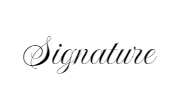
[Your Name]
RN
Date: August 28, 2054
Report Templates @ Template.net
